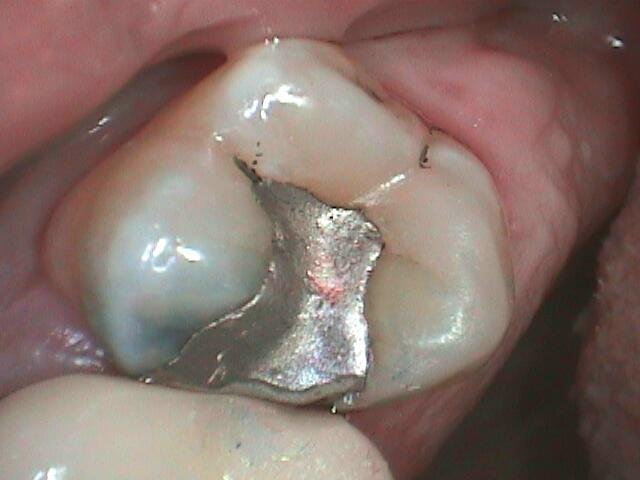

Amalgam is what dentists call silver filling material.
At Cook Family Dentistry in Auburn, Washington, we stopped placing amalgam fillings in 2006 because newer composite material is better for the tooth in the long-run. Composite requires much less tooth structure to be cut away, creates a seal to the tooth, and is more supportive to the tooth. Occasionally, concerned patients ask about amalgam, and here is our reply:
Do you use mercury?
We do not place silver or mercury fillings anymore.
Silver fillings were developed in Europe in 1812 and have been used in America since 1833.
While some people may have sensitivity to certain metals, silver fillings in general have been proven to be safe.
Silver fillings last a long time but in order to place them, the tooth has to be cut more severely. The bottom of the hole has to be wider than the top of the hole in order to hold the silver filling in place. This undermines the tooth structure and contributes to future breakage.
Tooth-colored (composite) fillings do not require as much tooth removal. They are bonded to the tooth and provide a seal and some support to the tooth. Like any material, composite material can chip and wear. Unlike amalgam/silver, composite can be repaired instead of cutting out the entire filling as long as the rest of the seal is intact and there is no decay.
I want to take out my mercury fillings.
We do not recommend removing silver fillings unless there is decay or fracture. Anytime we drill on a tooth, we risk irritating the nerve inside the tooth. An irritated nerve can get better on its own but if it doesn’t, the nerve will need to be removed and replaced with a rubbery sealing material. (This is a root canal.) Also, removal of silver fillings creates a fine metal dust and vapor that exposes the patient. We use a rubber dam and high volume suction to minimize exposure as much as possible when we have to remove any old materials.
The reason that mercury was added to metal powder in making silver fillings is that mercury is liquid at room temperature.
FDA has reviewed the best available scientific evidence to determine whether the low levels of mercury vapor associated with dental amalgam fillings are a cause for concern. Based on this evidence, FDA considers dental amalgam fillings safe for adults and children ages 6 and above. The amount of mercury measured in the bodies of people with dental amalgam fillings is well below levels associated with adverse health effects. Even in adults and children ages 6 and above who have fifteen or more amalgam surfaces, mercury exposure due to dental amalgam fillings has been found to be far below the lowest levels associated with harm. Clinical studies in adults and children ages 6 and above have also found no link between dental amalgam fillings and health problems. (www.fda.gov March, 2014)
I hope that reading this information makes your life a little better.
Smiles,
Dr. Amy Cook


Thanks for sharing such great article, it’s really helpful. There are also some more good blogs on dental amalgam which provide good shares on the topic.
Thank you so much for your comment. As a general dentist, it’s hard to find time to blog. More to come. 🙂
Thanks again,
Dr. Cook